
Prologue: The prehistoric people of the Colorado Plateau, the so-named Ancestral Puebloans, lived here for well over a thousand years. While the geology and scenic beauty and diversity of flora and fauna compliments the territory's featured assets, the achievement and cultural advance of these people is noteworthy.
It is for this reason the following diary is presented. . .a literary tribute to a truly innovative and enduring culture, whose legacy is both admirable (given their advancing cultural phases) and astounding (given their sustainable ecological practices long before the term became vogue in the 21st Century). Moreover, for a people who had no recorded history (hence, the implication behind the designate prehistoric), they left a discernible mark in history's pathway in many others way: petroglyphs, changing lifestyles over the centuries, dwellings and villages from the primitive to the truly epic, and a sophisticated tight knit society to mention only some attributes.

In view of what follows, this diary provides an historical overview of the Ancestral Puebloans (formerly, but no longer called the "Anasazi"), which includes their successors, the Puebloans. I would also like to add something I have mentioned in other diaries featuring the Colorado Plateau territory. Namely, how any geologic setting plays a pivotal role regarding natural and human history. For instance, if the terrain is ideally suited for flora and fauna, specifically conducive to plants and trees and water resources, then it follows human settlement eventually proceeds. Because the varying elevations of the Plateau goes from the high desert to mountainous terrain, and despite the difficulty of a convoluted terrain (in places) and predominant arid climate, natural resources are plentiful. Thus human settlements and the fields and gardens they planted abound just about everywhere.
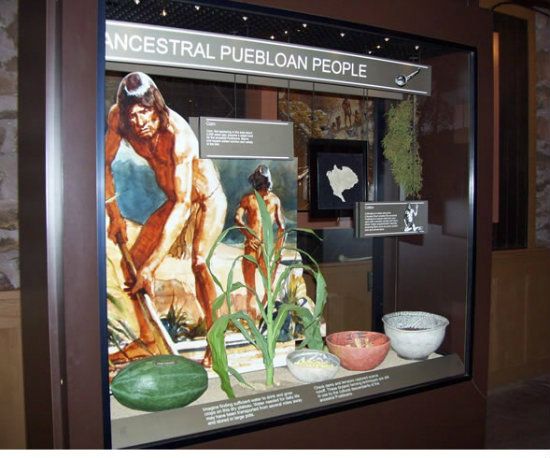
Something else I would like to point out is the enigma cultural scientists (archeologists and anthropologists) have pondered for many years. Actually, two specific questions: Where did these people originate and by what name were they called? The answer? We can only assume what we think we know about these former Archaic desert dwellers who likely were formed from different bands of people living to the south of the Colorado Plateau. When in time the amalgamated groups came north, crossing what is known as the Mogollon (pronounced "moog-e-own") Rim bordering the southern tier of the Plateau, they were likely the first people to settle in parts of their new homeland on a permanent basis. We're not sure when these people migrated here, but likely it was well before the start of the Common Era. As for the designate their cultural later became, Ancestral Puebloan, no one knows what these people used as a namesake for their cultural. What we do know is these people settled in different parts of the territory and can be identified by such names. For instance, the Chacoans from Chaco Canyon; the Mesa Verde people; the Hopi from the Hopi Mesa country, and so on. This diary will delve more deeply into this matter further along.
One thing I would like to point out at this time, however, is how the Hopis do not accept the designate most cultural scientists use. Instead, they refer to their ancestors only as the Hisatsinom. Loosely, "the ancient ones." The Puebloans, also a name linked with a Spanish influence, are known by the villages where each tribal sect settled. For instance, the Tao Puebloans, Isleta Puebloans, Acoma Puebloans, and so on.
As for the new homeland of the Ancestral Puebloans, these former hunter-gatherer nomads eventually settled down and became so-called dry farmers (due to the predominantly arid climate of their new homeland). As an agrarian society, they still retained their hunter-gatherer ways, yet remained in one locale for a longer period of time, then moved on to another locale, but always remaining somewhere in the vicinity of the so-called Four Corners region (today's axis point where Colorado, New Mexico, Utah and Arizona merge their respective borders).It can also be stated how the Ancestral Puebloans, once relocated on the Colorado Plateau, stayed here, while other prehistoric tribal people occupied low-lying sectors south of the Plateau.

Before getting started on this journey back in time, and introducing the Colorado Plateau's indigenous people who claim the first and lasting settlement in this territory, this diary begins with what I call common sense protocol for those who respect the past and the people who made their mark on the landscape. Please memorize these basic rules, because each has everything to do with cultural sensitivity and how to preserve and sanctify the relic atmosphere that permeates the entirety of the Colorado Plateau's human endowment.
(Continues after the fold.)
Model representation:

Which typically corrupt over time and become archeological ruins:

Then later in time what cultural scientists unearth and investigate:

Which leads to these common sense rules for tourists. . .
ARCHEOLOGICAL RULES OF THE ROAD
When visiting archaeological sties, please keep the following seven HOUSE RULES in mind, both for the sake of common courtesy, and because these rules are backed by strict laws and heavy fines and/or imprisonment if violated:
1) Don’t eat in the living room (avoid picnicking in archeological ruins, because crumbs and other food wastes attract rodents that may nest in the site). Kindly pick up and carry out your trash and garbage.
2) Don’t touch the rock art (glyphs of any kind). Oils from human skin damage these markings. Also, never deface this ancient artwork by adding your own silly mementos.
3) Don’t pee in the parlor or any other room (think about why this is not a good idea).
4) Don’t go if you’re not invited (a number of ruins are closed to the general public, and for a good reason). If you’re not sure about some particular archeological site you would like to visit, then ask whomever is in charge of the site (Native Americans, the NPS, BLM, and so on).
5) Don’t rearrange the furniture or mess with the knickknacks (just leave everything where you find it). This means all lithic artifacts, be they pottery sherds, arrow heads, prehistoric tools of any kind, even sandals made from yucca fiber, must be left where found so that others can enjoy seeing such ancient relics.
6) Keep your feet off the furniture (fragile walls that may crumple and topple easily). Also, walk carefully and avoid stepping on walls, artifacts, easily eroded slopes, even nearby cryptobiotic soil crust, which is mainly comprised of lichens and moss. These blue-black crusts increase the stability of easily eroded soil pavements, increase water infiltration that receive little precipitation, and increase fertility in soils often limited in essential nutrients (nitrogen and carbon).
7) Tell mom or dad if you see anything amiss about the ruins (inform a ranger or tribal member). Specifically, sites that are defaced, or if you witness someone removing artifacts. It’s okay to be a tattletale, because people like this are thieves in time, also destroyers of the past.

When visiting archaeological sites, LEAVE NO TRACE! Leave only your memories, garnish the experience and try to keep your footprints to a minimum. These sites are fragile and irreplaceable. They are also a precious legacy that is here today and will be here tomorrow for other generations to enjoy them as you do. But you must leave them as they are so that others can enjoy the same privilege as you have today. Also, when visiting Native American lands, national parks and monuments, the following federal historic preservation laws are intended to conserve cultural resources for the benefit of future generations. Know and respect these salient laws because this is just another way to know and respect the land and the people you visit:
• Antiquities Act of 1906 (P.L. 59-209, 34 Stat. 335)
• Historic Sites Act of 1935 (P.L. 74-292, 49 Stat. 335)
• Reservoir Salvage Act of 1960 and the Archeological and Historic Preservation
Act of 1974 (P. L. 86-532 and P. L. 93-291, 88 Stat. 174)
• National Historic Preservation Act, including Executive Order 11593 (as amended
1992)
• Archaeological Resources Protection Act of 1979 (P. L. 96-95; 93 Stat. 712)
• Native American Graves Protection and Repatriation Act (P. L. 101-601; 104 Stat.
3049)
• American Indian Religious Freedom Act of 1978 (P. L. 95-341; Stat. 469)
Environmental and Other Legal Authorities:
• National Environmental Policy Act of 1969 (P. L. 91-190; 31 Stat. 852)
• Grand Canyon Protection Act of 1992 (Public Law 102-575)
In other words. . .you don't pick up artifacts, not even pottery shards (smaller broken pieces) because you found them on the ground:

Or add your tag to these figures, just so you, too, will be remembered:

Or use a ruins and its artifacts (in this case, manos or metates) for doing your laundry:

Or sleep down here (inside a ceremonial kiva) because you wanted to get out of the rain, snow or cold:
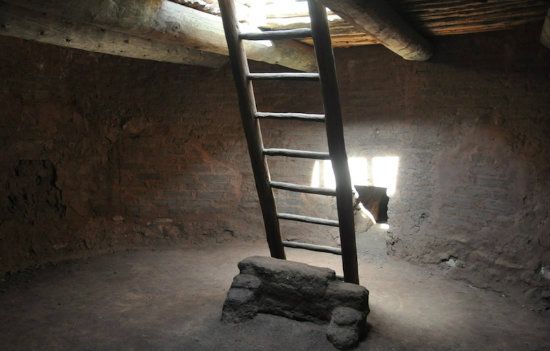
Or have a party in a seeming round basement (actually, a pit-house with a partial roof) while gazing at the stars:

Which sometimes might appear as an inviting round hole in the ground sans roofing:

Or use this ancient wikiup for a makeshift tent and pretending you're an aboriginal and one with nature:

So now you know visiting any ruins demands respect for these protected and sacred places (at least Native Americans feel this way about these ancient dwellings).
Oh, one more thing to add. . .what may appear to some people as trash, and therefore taking ownership is not trash. It's all protected. Even examples like this:

Or this. . .

Benchmark Dates: There are many tough and demanding jobs in the world and I think one of toughest and most demanding applies to what field anthropologists and archeologists do for a living. Then again, these meticulous time capsule sleuths (my name for their diligence) love what they're doing, no matter the conditions are. Try working in the hot Southwest sun for up to fourteen hours a day (sometimes longer) and see if you can match such an attitude.
That being said, when these cultural scientists came to dig, sift and study sites like this. . .

they not only uncovered dwellings and priceless artifacts directly connected to the people who made them, but also worked the problem. . .the puzzle. . . of identifying the timeline matching the people of the culture that once lived at the site. Thus it was necessary to correlate an approximate equation (of time) that matched the cultural development of the people that were scrutinized (and to the Nth degree).
The following timeline breakdown is the most popular means of identity known as the PECOS CLASSIFICATION SYSTEM. The dates assigned to its codification correlate with major contributions of appearance by humans on the North American continent. These dates marking select periods may also vary from source to source, that is, not all cultural scientists adhere to its classification and prefer other systems. Nevertheless, the Pecos Classification remains popular with academics and is a reliable count (as an average timespan) sanctioned by the famous archeologist who came up with the idea, Alfred V. Kidder (see below for more details).

His division listing all known Ancestral Puebloan culture (including Puebloans) into chronological phases is based on changes in such things as art, pottery, architecture and other cultural artifacts. The classification dates go back to a 1927 archaeological conference held in Pecos, New Mexico. Originally, his system classified eight stages of Southwestern prehistory, yet did not specify dates. These divisions denote the following:
• BASKETMAKER I (Early Basketmaker)
• BASKETMAKER II (or Basketmaker)
• BASKETMAKER III (or Post-Basketmaker)
• PUEBLO I (or Proto-Pueblo)
• PUEBLO II
• PUEBLO III (or Great Pueblo)
• PUEBLO IV (or Proto-Historic)
• PUEBLO V (or Historic)
That generic system has been replaced with the following, and more detailed classification, complete with dates and an explanation of each era’s designation. The split into “Basketmaker” and “Pueblo” eras also serves as continuing basis for discussing the culture of the Ancestors who lived throughout the Four Corners region.
ARCHAIC ERA: (8th millennium BCE to 12th Century BCE)
The hunter-gatherer nomads that migrated into, what would one day become the American Southwest are referred to as the “Archaic” people. There is little evidence for extensive habitation before 8000 BCE (Before Common Era); however it’s likely these people were already in place well before this assumed timeline. We know they were nomadic people who traveled in small bands; they gathered plants and other natural edibles, like berries and nuts; and they hunted game with stone-tipped spears, atlatls and darts. After the larger animals were driven into extinction by Clovis and Folsom people. . .say, creatures like this, do you think?

hunters had to think smaller, such as deer, antelope and bighorn sheep, including a variety of smaller creatures, such as rabbits, foxes and wolves.
Note: The original classification hypothesized a Basketmaker I Era. However, it was subsequently discredited by cultural scientists for a lack of physical evidence, and then included into the Archaic Era. This was sometimes referred to as the Oshara Tradition (from around 5500 BCE to 600 CE) which signifies a trend toward sedentary lifestyle with small-scale cultivation beginning around 1,000 BCE, centered in the San Juan Basin and the Rio Grande Valley in central New Mexico. It’s thought the Oshara people have ancestral roots in earlier Paleo-Indian culture, yet the debate on this matter remains speculative.
EARLY BASKETMAKER II Era: 1200 BCE to 50 CE
During this time the nomads camped in the open, or perhaps in caves on a seasonal basis. They began to cultivate gardens, and possibly larger fields of maize, also squash. They used manos and metates (pronounced mah-ta-tays) to grind the corn. They also made baskets, but there was no pottery. At this time, beans were still not cultivated.

LATE BASKETMAKER II Era: 50 to 500 CE
Because these people had decidedly turned agrarian, they constructed shallow pit-house dwellings. Crude storage bins and cists are also among their cultural advances. Likely, they figured out how to reroute water to their fields and gardens. There is also the grassroots of religion emerging, around which shamanistic cults were formed. Petroglyphs and other rock art also suggest there was ceremonial structure. Groups of these people appear to be linked into larger-scale networks, possibly for decision making, and certainly to keep the individual groups tied into one Ancestral Puebloan theme (as a new and advancing culture experiencing many changes over time).



BASKETMAKER III Era: 500 to 750 CE
Pit-House dwellings are now deeper and more developed, including above ground roomblocks (composed of clusters of compounds). The bow and arrow replaces the atlatl and spear. Pottery appears, both plain bisque and painted black-on-white designs. It’s also likely a cruder form of pottery was previously discovered, such as lining baskets for waterproofing, or even keeping the woven material from burning when hot coals were added to heat water. Cultivation of beans also begins, which completes the traditional three sister crops of the Ancestral Puebloans (maize, squash and beans and traditionally called the "three sisters").

Trade with other tribes from central America has begun. Cooking in pottery vessels permanently changes the diet and preference of the people.

Evidence that protein-rich wild amaranth and piñon pine nuts were also common staples added to the Ancestral Puebloan diet. People may have domesticated turkeys, though it’s not known if these creatures, which signify the largest bird species in that region, were eaten or desired for their feathers. Likely, both scenarios were favored. Another advance was seen in ceremonial chambers, the kivas. They were large, rounded and subterranean, each with the symbolic sipapuni (a Hopi word in origin) denoting the underground, or entrance, from one world to the next, and thus symbolic of emergence).


PUEBLO I Era: 750 to 900 CE
Villages grow in population. A tighter social integration is the norm. So are more complicated agricultural systems, such as check dams and reservoirs. Year-round occupation in settlements begins. In the larger villages Great Kivas appear, though pit-houses with rooms and storage bins remain in use. Above ground construction also undergoes modification, using jacal or crude masonry. Plain gray bisque predominates pottery design, though some red bisque and pottery decorated in black and white is more common.


PUEBLO II Era: 900 to 1150 CE
Although dwellings constructed at Chaco Canyon date back to sometime during the 800s, by 1050, Chaco is a major regional center. Approximately 1,500 to 5,000 (or more) people occupy its high desert landscape. It’s truly a unique setting in that Chaco is surrounded by what can be considered standardized planned towns. These so-called Great Houses were built from the wood of over an estimated 200,000 trees along with stone materials. Thirty-foot-wide roads (on average), flanked by berms, radiate from Chaco Canyon, each vectoring off in various directions. Small blocks of above ground masonry roomblocks and a kiva make up a typical pueblo in the complex. Great Kivas grow to 50-70 feet in diameter. Pottery vessels have also undergone a great deal of change, and consist of corrugated gray bisque and decorated black-on-white. There are some vessels decorated red and orange and likely acquired by trading. Included in the trade network are a variety of sea shells and turquoise, possibly a very prized commodity of trade among the village people. Notably, during the 1100s the rank and file of Chaco’s inhabitants swells compared to the decline of population noted toward the end of this era. There’s no known reason for the decline, however. Perhaps a more intensified agricultural effort producing higher yields had something to do with it. Terracing and irrigation were also common during this period.

After the harvest comes the grinding (and likely a time for catching up given what's happening in the community. . .

PUEBLO III Era: 1150 to 1350 CE
By this time, Ancestral Puebloans settlements mainly consist of larger pueblos, also something new in the way of housing: cliff dwellings. Round and square towers and turkey pens are equally common sites.



Most prehistoric communities throughout the Four Corners region are also experiencing a drastic change of climate, as drought. Periods of short-duration dry conditions prevail, only to be replaced by decent wet cycles, then back to dry. By 1279, which seems to be an agreed upon fixed date for the beginning of what is commonly called the "Great Drought," is at least one catalyst for the people to abandon their settlements; that is, most Ancestors depart the Four Corners region, never to return. Also disappearing during this time are the Hohokam people who lived to the south of the Colorado Plateau.
PUEBLO IV Era: 1350 to 1600 CE
The assumption of a prolonged Great Drought throughout the Colorado Plateau and lasting, perhaps, one hundred years has not been confirmed by climatologists. Neither did all the Ancestral Puebloans vacate the Four Corners region during the onset of the latest drought cycle. For example, the Hopis claimed their oldest village, which is also said to be the oldest continually inhabited village in North America (since around the 1100s), was occupied during this period. Other places, like Acoma Pueblo, near present-day Grants, New Mexico, and pockets of Mimbres people (related to the Mogollon) on the southern tier of the Plateau (its rim), also remained. However, the majority of the original inhabitants had emigrated to (mostly) the Rio Grande Valley southeast of Cortez, Colorado which was one of the highest developed settlement regions for all Ancestral Puebloans. What climatologists know is a series of recent dry cycles gripped parts of the Colorado Plateau, with intermittent wet cycles, only to revert to a longer drought cycle starting in the late 1300s. Perhaps a thirty or so year span best defines the Great Drought, but on the proviso any moisture relief, as wet cycles, were always minimal and therefore short-lived.
Typically, during the initial Puebloan periods the people were adaptive to such rigorous natural changes. The Ancestral Puebloans were always a resourceful people and this trait is what had sustained since the start. For over a thousand years these adaptive people worked with nature in a usually iffy climate region. Nonetheless, there were many more people engaged in the matrix of their society divided into numerous communities, some large, some small, and all scattered throughout the Four Corners axis region. In this era, the fourth, we see the building of even larger pueblos centered on a main plaza.



Socially, it’s also a period of more conflict than cooperation. Then again, before the final blow of the telling and Great Drought it is thought social unrest was already in place. If there was interference by warfaring, either by outsiders or elements of Ancestral Puebloan culture during this time, then such restive conditions exacerbated by stress had a lengthy head start in the downgrading of their society. Possibly, too, some unknown religious reason was behind the mass emigration. What we do know beyond such speculation is that Kachinas appear for the first time during this new Puebloan era.


Plain pottery also supplants corrugated. Red, orange and yellow pottery is on the rise as black-on-white declines. Cotton, the latest valued trade item, is introduced and grown as a commodity. The people during this time of rebuilding, and one might even say a new emergence of their culture and change, are now classified by cultural scientists as The Puebloans. They are the successors of the Ancestral Puebloans, still the same people, yet a modified culture and tradition is duly noted. They are also joined by other cultures, who more than likely previously lived in parts of the Four Corners region. These people represent the Great Basin Culture and its many tribal people.

Note: The Great Basin people roamed between the Rocky Mountains and the Sierra Nevada range, in what is now Nevada, also parts of Oregon, California, Idaho, Wyoming and Utah. There is archeological evidence these people arrived as early as 10,000 BCE, albeit other Numic-speaking Shoshonean people are considered relatively more recent arrivals (possibly as late as 1000 CE). Cultural scientists use the terms “Desert Archaic,” and sometimes “The Desert Culture” when referring to this culture that was simultaneous to the Ancestors before and after their arrival on the Colorado Plateau. Paiutes, Utes, Bannock, Comanche, along with the aforementioned Shoshone made up the various tribes that entered the Four Corners region at different times, whose settlements are more defined sometime after the Great Drought cycle altered to a more auspicious climate. Following them, two tribal groups originating from Athabaskan people, found their way to the desert-canyon and mountainous country of the Southwest. These were the Navajo and Apache people. It’s thought they migrated from the north and arrived well before the first Europeans––Spaniards––arrived from the south in 1540. Possibly, 1510 to 1520 might serve as a timeline for these new interlopers. Then again, there are claims by either group they were here long before this established benchmark. Thus the mid to later 1400s might be closer to the truth.

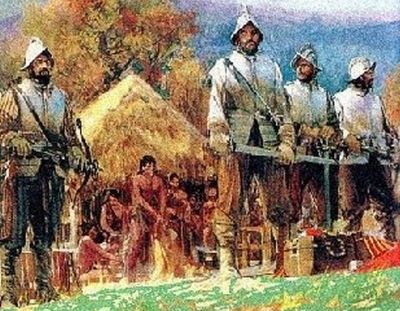
PUEBLO V Era: 1600 to the Present
Apart from Great Basin tribal settlements in parts of the Four Corners region, there were many other tribal people who moved into the Southwest, and stayed. For instance, the Navajo and Apaches. Hispanic people, from what would one day be called Mexico, and Spaniards who claimed Mexico and dubbed it New Spain, were the next people who settled here. They were later joined by the New Americans, starting with the encroachment of mountain men and trappers (during the early 19th Century), and later followed by Mormons. The U. S. Army was also in place by the mid-19th Century, and settlers and ranchers and other colonies of people weren’t too far behind. The railroads, industries of all kinds, and of course military campaigns that set out to claim the western territory (as held by Mexico, Spain, the British and the French) seemed to happen in a blink of time. Wars were fought and won by the Native Americans, the Hispanics and Anglos, though eventually the East got what it came for: final settlement (and some say at any cost). Native Americans ended up living on the Indian lands, called reservations, and Hispanics made up the trinity of the three cultures and races inhabiting the Southwest. That story is told elsewhere throughout this text. However, as the Pecos Classifications refers to the prehistoric to historic to modern day indigenous people of the Southwest, the Ancestral Puebloans eventually become known as the twenty-one individual Puebloan tribes who mostly occupy different sectors of New Mexico.

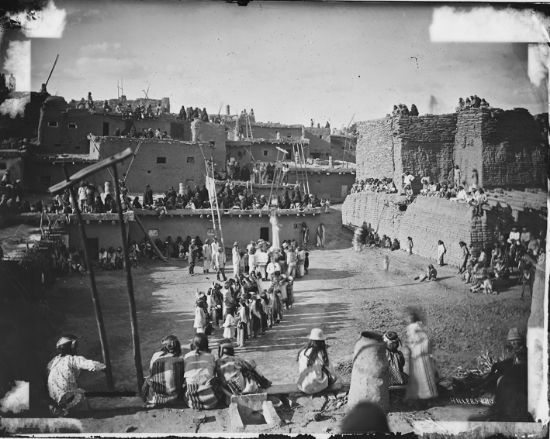
Miscellaneous: Previously mentioned were the curious fashioned objects called split-twig figurines. These archaic icons are in the shape of either a deer or a bighorn sheep. They were made by shaping and wrapping two halves of a split willow twig into the likeness of either animal. They’re found across Nevada, parts of Utah, and in the Grand Canyon north of the Colorado River. Strikingly similar to images seen in Archaic petroglyphs, these figurines are diagnostic of Lake Archaic culture. Usually found in dry caves, they are of varying dimensions, but most are palm-sized. They may have been charms used in pre-hunting rituals.

Why not feign the primal by making one of your own?

By the time the Archaic Period was transcended by the Basketmaker eras the people of this later period were practically jogging in their cultural advances compared to the Archaic culture’s crawl across time. Maize was a big part of this change, and growing it was what changed a hunter-gatherer and nomadic society into something more agrarian and settled. Corn, beans, and squash have also been under cultivation in the Valley of Mexico for at least 9,000 years. However, it wasn’t until sometime around 3,500 three years ago that people moving northward out of the Mexican highlands brought corn into the Southwest. By 3,000 years it was being grown locally on the Colorado Plateau; also, south of the Colorado River. By 2,500 years corn had appeared in the Grand Canyon region and then onto the present-day Arizona Strip (the northern rim territory). From there this preferred crop traveled northward into Utah. Corn essentially changed everything in the Ancestral Puebloan culture especially.

Such alterations to a pattern of life established over centuries (an agrarian lifestyle intended to plant corn) is also a cultural feat that’s not made casually. Other vital repercussions of the Ancestors developing culture and society are simply numerous. Nutrition, social fabric, spiritual foods, and the routine of countless daily tasks all helped accommodate the new order that comes with village life and dependence on corn. Vast trade networks were established, and no doubt there was competition among the people. Individual groups maintained their cultural ties to other groups, though it’s thought each group had its own traditions added to the mainstay cultural traditions that connected these people spread throughout the Four Corners region.
Along with advancing decorative art forms in their pottery, new designs in jewelry, the intermarriage of people from one cultural group with another, and new designs for villages, including cliff house dwellings, were all part of the cultural process. Great Houses and kivas represented the new order of community life and religious ceremonies of the Ancestral Puebloan culture.


And they came from this other place. . .the sipapu, into the so-called "Fourth World":

The people were headed for a new homeland, while advancing their culture and ties. They accomplished this by various implements that keep them on the forefront of the passing and changing eras that began some 8,000-years-ago, as a fledgling group of people who eventually ended up settled in the Four Corners region, and whose archeological ruins today, most of which still survive, and remind us of their enduring presence. Today, we also gaze back through a portal of time and realize the face and value of a people who left no written language, had no written language, yet are able to teach us their ways from the distant past.

And they left us these word-symbols that tells us something about their mindset, though nonetheless enigmatic and engaging:

Cultural Distinctions: Archaeological cultural units such as the Ancestral Puebloans, Hohokam, Patayan or Mogollon are used to define material culture similarities and differences that may identify prehistoric socio-cultural units, equivalent to modern societies representing a variety of distinct cultures. The names and divisions are classification devices based on theoretical perspectives, analytical methods and data available at the time of analysis and publication. They are subject to change based on new information and discoveries. It should also not be assumed that an archaeological division or culture unit corresponds to a particular language group or to a sociopolitical entity such as a tribe.
When making use of modern cultural divisions in the American Southwest, it’s important to comprehend that current terms and conventions have three significant limitations:
• Archaeological research focuses on key items left behind during people’s activities. For instance, fragments of pottery vessels, garbage, human remains, evidence left from the construction of dwellings, and stone tools (spears, darts, arrow points, knife blades, punchers, scrapers, awls, gravers, and a variety of other utilitarian items). However, many other aspects of the culture of prehistoric peoples are not tangible. Their beliefs and behavior are difficult to decipher from physical materials. Their languages also remain unknown based on the fact they had no known writing system. At best, there may be glyphs representing some cultural identity and meaning.
• Cultural divisions are tools of the modern cultural scientist and should not be considered similar to divisions or relationships ancient people may have recognized. Modern cultures in this region, many of whom claim some of these prehistoric people as ancestors, contain a striking range of diversity in lifestyles, social organization, language and religious beliefs. This suggests these ancestral people were also more diverse than their material remains may suggest.
• The modern term style has a bearing on how material items such as pottery or architecture can be interpreted. Within a culture, different means to accomplish the same goal can be adopted by subsets of the larger group. Some cultural differences may be based on linear traditions, on teaching from one generation or school to another. Other varieties in style may have distinguished between arbitrary groups within a culture, perhaps defining status, gender, clan or guild affiliation, religious belief or cultural alliances. Variations may also reflect the different resources available in a given time or area.

Proviso: Defining cultural groups, such as the Ancestral Puebloans, tends to create an image of territories separated by clear-cut boundaries. Such boundaries simply did not exist. Prehistoric people traded, worshipped, collaborated and fought most often with other nearby groups. Cultural differences should therefore be understood as a gradual change in a trait or in the frequency of a trait within a species or a classification of people over a geographical area. In short, cultural differences as they apply to increasing gradually as the distance separating groups also increases. Departures from the expected pattern may occur because of unidentified social or political situations or because of geographic barriers. In the Southwest, mountain ranges, rivers and, most obviously, chasms like the Grand Canyon can be significant barriers for human communities, likely reducing the frequency of contact with other groups. Current opinion holds that the closer cultural similarity between the Mogollon living to the south of the Colorado Plateau and Ancestors and their greater differences from the Hohokam and Patayan is due to both the geography and the variety of climate zones in the Southwest. (See parting shots below.)
Parting photographs of a truly epic people and innovative culture:


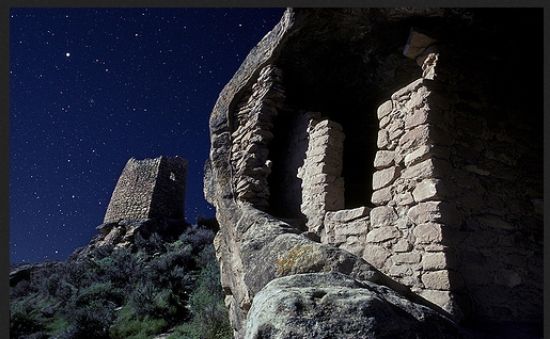
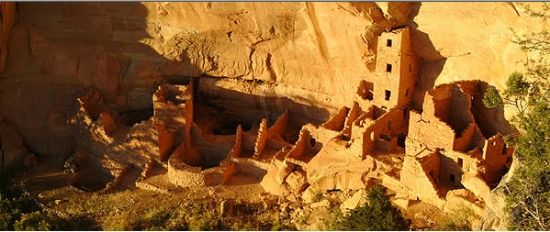
And so, DKos community, we come to the end of another trail, another armchair tour. I trust you learned a thing or two from this latest spiel. There’ll be other places to tour, so stay tuned for more in this series.
As always, your thoughtful commentaries are welcomed.
Rich
http://www.nmstarg.com/...
http://www.grandcanyon.org/...
P. S. In case you haven’t already read them, here are other diaries in this series that can be found by clicking on my profile.
Zion Canyon (Hiking the Subway) diary:
http://www.dailykos.com/...
Zion Canyon NP:
http://www.dailykos.com/...
Geology 101:
http://www.dailykos.com/...
Ethnobotany:
http://www.dailykos.com/...
Chaco Canyon series:
http://www.dailykos.com/...
http://www.dailykos.com/...
The Colorado Plateau series:
http://www.dailykos.com/...
http://www.dailykos.com/...
http://www.dailykos.com/...
Res Dogs (prologue and chapter series):
http://www.dailykos.com/...
http://www.dailykos.com/...
Bryce Canyon NP:
http://www.dailykos.com/...
The Art of Backpacking:
http://www.dailykos.com/...
George Steck Vintage Glen Canyon film:
http://www.dailykos.com/...
A Companion Narration (for George Steck film):
http://www.dailykos.com/...
Monument Valley:
http://www.dailykos.com/...
The Lost Atlantis (Glen Canyon):
http://www.dailykos.com/...
Glen Canyon-Lake Powell series:
http://www.dailykos.com/...
http://www.dailykos.com/...
http://www.dailykos.com/...
http://www.dailykos.com/...
A Most Surprising Christmas:
http://www.dailykos.com/...
http://www.dailykos.com/...


